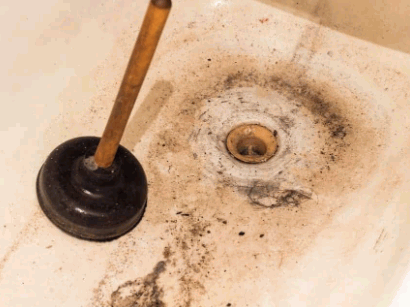We've stumbled on this post pertaining to How to Unclog Your Sink with a Plunger listed below on the web and decided it made sense to talk about it with you over here.
Introduction
Appropriate upkeep of home drains pipes is necessary for protecting against blockages and making sure smooth water flow. Among the secret devices in every property owner's toolkit is the plunger, together with different drain cleaners developed to deal with stubborn clogs properly. This write-up explores how to make use of plungers and drainpipe cleaners successfully to keep your drains moving freely.
Section 1: Understanding Bettors
Sorts of Plungers
There are several sorts of plungers readily available, each designed for different sorts of drains pipes and blocks. One of the most usual types include cup plungers, flange plungers, and accordion plungers.
Exactly How Plungers Job
Plungers deal with the principle of creating stress and suction to displace obstructions. When correctly used over a drainpipe, they produce a vacuum that can take out particles or break up blockages.
Choosing the Right Plunger
Selecting the ideal bettor depends upon the sort of drain and the nature of the blockage. Mug plungers are ideal for sinks and tubs, while flange bettors are much better matched for commodes because of their layout.
Common Blunders with Plungers
Avoiding these mistakes ensures effective plunging: improper seal around the drainpipe, not enough force, and not clearing bordering debris.
Section 2: Utilizing Plungers Properly
Prep work
Prior to diving, make certain the plunger covers the drainpipe entirely and develops a limited seal. Clear any kind of visible debris around the drain opening.
Method
Begin with gentle diving movements to develop suction. Increase stress slowly, making use of a stable rhythm. Repeat as necessary up until the drainpipe clears.
Troubleshooting Tips
If diving doesn't work, try readjusting the seal, using oil jelly for a better seal, or using a various kind of plunger.
Section 3: Comprehending Drainpipe Cleaners
Types of Drainpipe Cleansers
Drain pipes cleaners can be chemical or chemical. Chemical cleaners make use of solid chemicals to dissolve blockages, while chemical cleansers utilize natural enzymes to break down organic matter.
Exactly How Drainpipe Cleansers Work
Chemical cleansers react with blockages to dissolve them, while chemical cleansers break down organic materials like hair and grease without damaging pipelines.
Security Considerations
Always put on handwear covers and eye protection when using chemical drainpipe cleansers. Make certain adequate air flow and follow supplier directions thoroughly.
Eco-Friendly Alternatives
Consider making use of vinegar and baking soda or enzyme-based cleaners for environmentally friendly alternatives that are more secure for pipelines and the setting.
Section 4: Using Drain Cleaners Properly
Application Strategies
Pour chemical cleaners straight right into the drain opening. Allow them to help the advised time prior to purging with warm water. Enzymatic cleansers must rest over night.
Safety measures
Stay clear of blending various sorts of cleaners, as this can generate poisonous fumes. Never ever use chemical cleansers together with a plunger, as splashing can take place.
Managing Stubborn Blockages
For consistent obstructions, think about making use of a pipes snake or calling an expert plumbing professional to prevent damage to pipelines.
Verdict
To conclude, understanding how to use bettors and drainpipe cleansers effectively is vital for maintaining healthy and balanced pipes systems. By picking the right devices and strategies, property owners can deal with minor clogs and prevent major pipes issues down the line.
How to Use a Plunger to Unclog a Drain
The humble plunger is a simple yet effective tool for breaking clogs in sinks, tubs and toilets. This handy tool is easy to use. You can make the most of its power if you understand how it works. Ready to dive in? Here’s what you need to know.
Safety First!
Never use a plunger with drain chemicals. Water will splash as you work, and the chemicals can spatter, burning skin and eyes. It’s a good idea to use rubber gloves and wear safety goggles when you work on a clog.
Choose the Right Tool for the Job
Plungers come in two different styles. Sinks, bathtubs and showers require a cup plunger. Like its name suggests, the rubber end is shaped like a cup. Use a flange plunger on toilets. These plungers have a rubber funnel extending from the cup. A plunger needs to be big enough to cover the drain.
Ready, Set, Plunge!
- Coat the rim: Coat the plunger rim with petroleum jelly. This helps make a better seal.
- Block outlets: Hold a wet rag over nearby outlets such as the overflow vent or the drain in a second sink.
- Release air: Insert the plunger at an angle into the water. Water will displace air in the cup. A water-filled cup is more forceful than one filled with air.
- Keep the plunger upright: Hold the plunger perpendicular to the drain. Use fast, forceful strokes, but make the first stroke gentle. The first stroke can create a splash if the cup still contains air. Thrust the plunger 15 to 20 times.
- Snap off the plunger: The final stroke should be a strong upward motion that ends when the plunger snaps off the drain.
- Repeat the process: you may need to repeat this sequence several times. When the water drains away, your work is done. High-five!
https://plumbernw.com/blog/how-to-use-a-plunger-to-unclog-a-drain/

I have been very interested in A Guide to Plungers (and How to Use Them) and I really hope you enjoyed my post. Do you know about another individual who is curious about ? Why not promote it. Thanks a lot for your time invested reading it.
Book Your Installation
Comments on “Ways to Properly Apply Plunger and Drain Cleaner: Specialist Guidance”